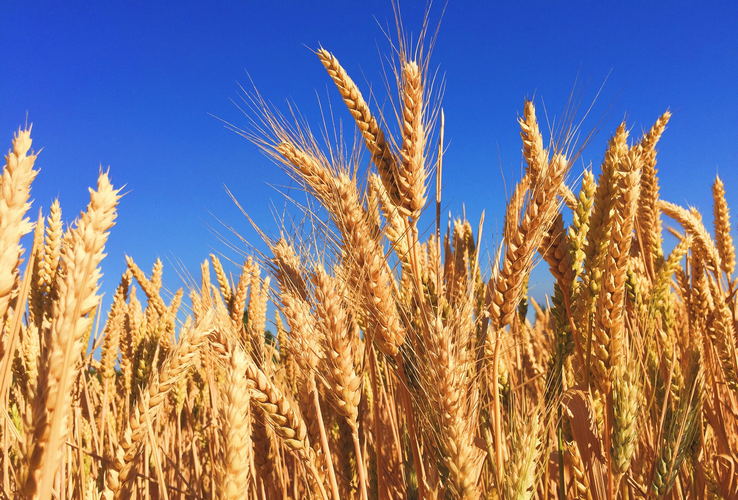Future trend and Prospect of bio based TPU
Since the industrial revolution, human began to use petrochemical fuels in large quantities, which ushered in an industrial era dominated by petroleum. Generally, common plastic products rely on petrochemical raw materials for production, and the greenhouse gases emitted from the manufacturing process make global warming and climate change intensified year by year. The supply of traditional petrochemical energy such as coal, oil, and natural gas will eventually be unable to meet human demand. In order to solve the problem of petrochemical energy shortage and climate change caused by carbon emissions, the development of energy and industrial raw materials will shift to bio based materials similar to the organic composition of petrochemical raw materials in the future.
What are bio based materials?

(▲Image Source: piqsels)
Bio based materials are derived from renewable natural resources (such as corn, cassava, wheat, potato, cellulose, palm oil, etc.) through biological, chemical and physical methods. The products include bio based compounds, bio plastics, wood-plastic composites, etc., which are environmentally friendly, renewable and biodegradable. The end application is very wide, such as shoes, bags, clothing, daily necessities, packaging materials or disposable tableware, hotel spare parts, etc.,. And it can also be used in the biomedical field.
In terms of current technology, there are still many technical obstacles in 100% bio plastics. Therefore, the concept of bio based materials has been developed, which is to replace some petrochemical raw materials with natural biological materials. VINCOTTE, a Belgian testing and certification organization began to launch the OK Biobased mark in 2009, and it is still the most authoritative bio plastic certification mark in the EU. VINCOTTE is certified in accordance with DIN ISO 10694 (determination of total organic carbon content) and the latest version of ASTM D6866 (Methods B and C only) for intermediate and end product raw materials, which shall contain at least 30% organic carbon and 20% biochar. According to the EU bio plastic certification standard, the biochar content of the products is divided into four levels:
-
One star: 20% - 40% biochar content
-
Two stars: 40% - 60% biochar content
-
Three stars: 60% - 80% biochar content
-
Four stars: More than 80% biochar (highest grade)
Application of bio based materials in polyurethane
Polyurethane has the characteristics of good abrasion resistance, tear resistance, sealing, sound insulation, and good processing performance. It is mainly reacted by Isocyanate, polyether polyol, polyester polyol and chain extender. These raw materials and intermediates come from petroleum, coal and other resources, and most of them are chemicals that will release harmful substances. Although polyurethane material itself is environmental protection plastic, it still needs to be degraded in a specific environment. Therefore, the production of environmentally friendly polyurethane products by replacing petroleum raw materials with bio based materials has gradually become a trend. International chemical plants have launched various bio based polyurethane products, which can be used in a variety of manufacturing processes such as film coating, blown film, blow molding, injection, extrusion, etc.

(▲Primus Lite II Bio is made of more than 30% natural plant materials, including corn, natural rubber and seaweed foam.
Image Source: VIVOBAREFOOT)
CPMC successfully developed polyurethane products containing bio based fermentation polymerization, driving the regeneration of raw materials and the application of bio based raw materials. CPMC is able to develop new products without changing the composition of the formula, and can also adjust the formula according to customer demand. Both of them can reach the product characteristics similar to those made by traditional petrochemical raw materials. At present, CPMC has products for shoe materials, films and sealing tape, such as: EC2P80AU, EC2P85AU, EC1P70HU, etc. In the future, CPMC will continue to develop bio based products, expecting to achieve 100% bio based content in order to reduce the environmental damage caused by petrochemical industry.
Bio based TPU products promoted by CPMC: 【product information】 【contact us】
|
Item |
Bio-based content |
Hardness |
100% Modulus |
Tensile Strength |
Elongation at break |
Application |
|
EC2P80AU |
48% |
80±2A |
45 |
300 |
400 |
Films |
|
EC2P85AU |
46% |
65±2A |
70 |
350 |
400 |
Shoe materials |
| EC1P65A | 25% | 65±2A | 20 | 250 | 600 | Shoe materials |
| EC1P85A | 25% | 85±1A | 70 | 300 | 400 | Films |
Features of bio based materials:
-
Reduce the use of petrochemical resources
-
Reducing greenhouse gas emissions
-
The quality and performance are the same as general plastic products
-
Customized solutions
Bio plastic certification mark
-
OK Biobased: EU system.
Star rating according to the bio-material content.

-
DIN-Geprüft BIOBASED: German system.
Divided into three levels: 20-50%, 50-85%, >85%

-
USDA: The U.S. system.
Products with more than 25% of the bio based material content are awarded a label, and the actual content is marked for consumers to identify.

-
バイオマスプラ: Japanese system.
The bio based material content of more than 25% can be applied.

- Taiwan Bio plastics Environmental Label: Taiwan system.
The bio based material content of more than 25% can be applied.

Data source:
Plastics Industry Development Center Science Development (2014, May Vol.497)

